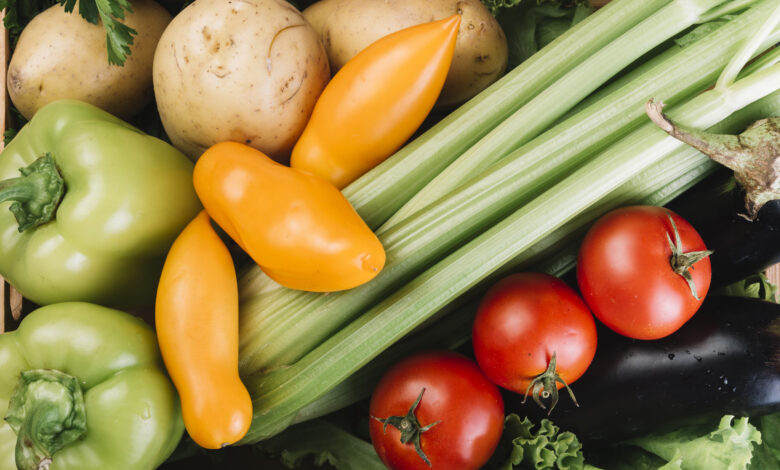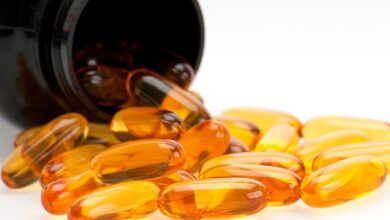
Fresh vegetables are a staple in a healthy diet, packed with essential nutrients and vibrant flavors. But when you’re at the market or grocery store, how do you use your senses to choose fresh vegetables? Understanding how to engage your senses—sight, touch, smell, and even hearing—can help you pick the best produce every time. In this article, we’ll delve into the practical ways you can use your senses to select the freshest vegetables, ensuring you always bring home the best for your meals.
Sight: The Visual Clues of Freshness
Sight is your first and most obvious sense to rely on when selecting fresh vegetables. The appearance of the produce tells you a lot about its quality and freshness.How to Raid a Group Chat in Teams
Color
One of the most critical visual indicators is color. Fresh vegetables typically boast bright, vibrant colors. For instance, leafy greens like spinach or kale should be a deep green without any yellow or brown spots. Similarly, tomatoes should have a consistent red color (or the appropriate hue for your chosen you’reyou’rey) without any green shoulders or cracks. Carrots should be bright orange, and bell peppers should have rich, vibrant colors, whether red, yellow, or green.How to Maintain a Balanced Diet: Essential Tips for Healthier Living
Surface Condition
Inspect the surface of the vegetables for any blemishes, cuts, or bruises. These marks indicate that the vegetable is past its prime or has been handled poorly, potentially affecting its taste and nutritional value. For example, potatoes with green spots or sprouts should be avoided, as these are signs of overexposure to light and could be toxic.
Shape and Size
The shape and size of vegetables can also give you clues about their freshness. Oddly shaped vegetables can be just as nutritious as their perfectly formed counterparts, but if a vegetable looks too large or misshapen, it may be overripe. For instance, overly large zucchinis can be challenging and less flavorful, while oversized tomatoes may be watery and bland.
Leaf Condition
For leafy vegetables like lettuce, cabbage, or herbs, the condition of the leaves is a clear indicator of freshness. Fresh leaves should be crisp and firm, with no signs of wilting. Avoid leaves that are yellowing, browning, or have dark spots, as these are signs of age or decay.
Visual Freshness Checklist:
- Bright, vibrant colors.
- Smooth, unblemished skin.
- Firm texture without soft spots.
- Crisp, healthy-looking leaves for leafy vegetables.
Touch: Feeling for Freshness
While sight provides an initial assessment, touch gives you a deeper understanding of the vegetablvegetable’sss.
Firmness
A fresh vegetable should feel firm to the touch. For example, cucumbers, bell peppers, and carrots should have a solid, firm texture without soft spots. Softness in these vegetables often indicates overripeness or spoilage. Potatoes, onions, and garlic should feel hard and dense without mushy areas.
Weight
Heaviness for its size is another good sign of freshness, especially for vegetables like tomatoes, bell peppers, and squash. A heavier weight usually means the vegetable is full of water, a sign of freshness. Light or hollow-feeling vegetables may be dehydrated and less flavorful.
Skin Texture
The skin of vegetables should feel smooth and firm. For example, smooth-skinned vegetables like cucumbers and zucchini should be free of wrinkles or shriveling, signs of moisture loss, and age. Root vegetables like carrots and potatoes should have firm, unblemished skin.
Touch Freshness Checklist:
- Firm, not soft or mushy.
- Heavy for its size.
- Smooth, unwrinkled skin.
Smell: The Aroma of Freshness
The sense of smell is often overlooked when selecting fresh vegetables, but it can be an excellent indicator of quality.
Fresh, Earthy Scent
Most fresh vegetables should have a clean, earthy smell. For instance, fresh tomatoes should have a sweet aroma at the stem end. Vegetables like bell peppers, cucumbers, and zucchini should have a fresh, mild scent. If you notice any off-putting odors, such as sourness or an overly strong smell, it may indicate that the vegetable is past its prime.
Intense Aromas for Herbs and Alliums
The smell is essential for herbs and alliums (like garlic, onions, and leeks). Fresh herbs like basil, cilantro, and mint should have a robust and characteristic scent. The herbs may not be fresh if the aroma is faint or nonexistent. Onions and garlic should have a pungent smell without sour or fermented odors.
Smell Freshness Checklist:
- Mild, fresh, and earthy scent for most vegetables.
- Robust and characteristic aroma for herbs and alliums.
- Avoid sour or overly strong odors.
Sound: Listening for Freshness
While it may seem unusual, sound can also play a role in selecting fresh vegetables. This sense benefits certain vegetables like melons, squash, and cucumbers.
The Hollow Sound of Ripeness
Giving vegetables like watermelons or cantaloupes a gentle tap can help you determine their ripeness. A ripe melon will produce a deep, hollow sound, indicating that the fruit is full of water and ready to eat. If the sound is dull or flat, it may suggest that the melon is overripe or underripe.
Crisp Snap
A quick snap of the ends can indicate freshness for vegetables like beans or asparagus. Fresh beans should break easily with a crisp snap, while limp or rubbery beans may be old. Similarly, fresh asparagus should snap cleanly when bent.
Sound Freshness Checklist:
- Hollow sound for ripe melons.
- Crisp snap for beans and asparagus.
The Role of Seasonal Availability
Seasonality plays a crucial role in the freshness of vegetables. Vegetables in season are more likely to be fresher, as they have yet to travel long distances or be stored for extended periods.
Knowing What’s WatsoniWhat’son
Knowing which vegetables are in season in your area can significantly improve your ability to select fresh produce. For example, you might find fresh asparagus, peas, and artichokes in the spring. In the summer, tomatoes, zucchini, and bell peppers are at their peak. Fall brings an abundance of root vegetables like carrots, potatoes, and beets, while winter is the time for hearty greens like kale and cabbage.
Shopping Locally
Shopping at local farmers’ marketsfarmers’farmers’ or buying produce that is labeled locally grown can also increase your chances of getting fresh vegetables. Local produce often has a shorter time between harvest and sale, meaning it’s accessible when you buy it.
Seasonal Freshness Checklist:
- Know what vegetables are in season.
- Prefer locally grown produce.
Common Mistakes to Avoid
When choosing fresh vegetables, making a few mistakes can easily lead to less-than-optimal picks. Here are some common pitfalls to avoid:
Overlooking Small Imperfections
While avoiding vegetables with major blemishes or damage is essential, don’t donate a vegetable just because of a minor imperfection. Slight cosmetic flaws often don’t affect the taste or quality of the vegetable.
Focusing Only on Price
While choosing the cheapest option is tempting, the loit’swest-priced vegetables are only sometimes the freshest. Often, these are vegetables nearing the end of their shelf life.
Ignoring the Store’s Store’sment
Pay attention to how the vegetables are stored. Fresh vegetables should be kept cool and moist. If the store environment seems too warm or the produce is dry, it might not be the freshest.
Not Planning Ahead
Buy vegetables that you plan to use within a few days. Even the freshest vegetables will retain their quality if used briefly.
Final Thoughts
Choosing fresh vegetables is an art that requires attention to detail and a bit of practice. You can make more informed decisions and enjoy the best produce available by using your senses—sight, touch, smell, and sound. Consider the seasonality and source of your vegetables, and avoid common mistakes that can lead to less-than-fresh picks. With these tips, you’ll be on your way to mastering the selection of fresh vegetables, ensuring that your meals are healthy and delicious.
Questions & Answers
Q: Can I use these tips to pick fruits as well?
A: Many of these sensory tips can also be applied to fruits. However, fruits often have additional cues like sweetness in smell or juice content that can help you determine their freshness.
Q: Using my senses, how can I tell if a vegetable is organic?
A: While organic vegetables often look similar to non-organic ones, they may have minor blemishes or variations in size and shape due to the lack of synthetic pesticides. The freshness indicators like color, firmness, and aroma still apply.
Q: What should I do if I accidentally buy vegetables that aren’t aren’t? If your vegetables aren’t as you’d like, try using them in cooked dishes where their slightly diminished quality won’t be noticeable. Soups, stews, and casseroles are great options.
Q: Are there any vegetables that should be avoided if they have a particular smell?
A: Yes, if vegetables like broccoli, cauliflower, or cabbage have a robust sulfuric smell, it may indicate that they are past their prime.
https://naturals.pk/collections/vegetables
4o





